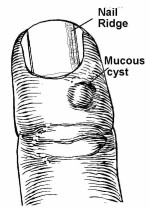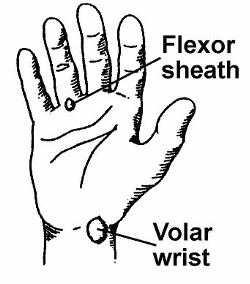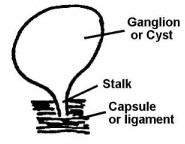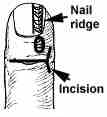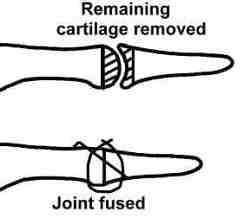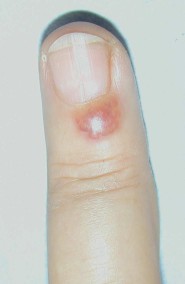
Ganglion Cysts are very common swellings (lumps) that sometimes grow in the hand and wrist.
These cysts are not malignant (cancerous).
Ganglions in the hand occur in 4 characteristic sites:
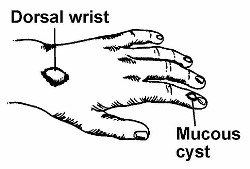
Ganglion cysts usually arise from adjacent joint linings or tendon sheaths.
Mucous cysts arise from then end joint (D.I.P.) of the finger.
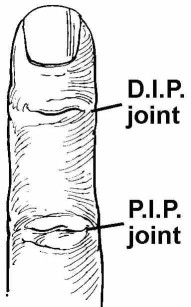
They occur secondary to osteoarthritis in the end joint of the finger. Occasionally they appear or are noticed first after an injury to the finger. The cyst can be painful especially when it first appears. It is not always clear whether the pain is due to the cyst or the underlying arthritis. Ganglions may fluctuate in size and may disappear spontaneously. The cyst may cause deformity of the finger nail.
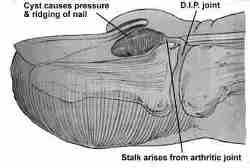
Diagnosis:
The diagnosis of a ganglion cyst is usually straight forward.
Dr Myers may recommend x-rays to assess the degree of arthritis in the D.I.P. joint and to look for loose bodies in the joint.
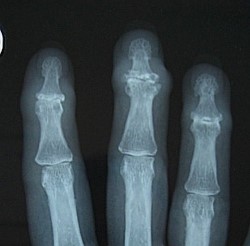
Treatment:
1. Observation - some ganglions resolve spontaneously
2. Injection with cortisone & bursting or draining the ganglion. This has only a 20 – 30% chance of curing the cyst but the benefit of being a relatively minor procedure
3. Surgery
- The major Indications for surgery are:
1. Pain
2. Cosmetic. The cyst may cause finger nail deformity or ridging due to pressure on the nail bed
3. Recurrent discharge.
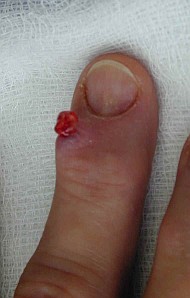
4. Risk of Infection: There is a small risk of infection when the ganglion bursts. As the ganglion is in direct continuity with the joint there is a very small risk of joint infection
5. Other treatments have failed
Surgery Involves:
1. Resection of the cyst
2. Resection of any loose bodies or spurs from the joint
3. Remove to back capsule of the joint from which the ganglion is arising
- Is generally performed in hospital as a day only procedure. At the end of the procedure local anaesthetic is inserted used so that there is no pain and the finger will be numb for several hours.
- after the operation the finger can be exercised as soon as pain permits
Complications:
1. Recurrence
- the major problem with this surgery is that approximately 10% of mucous cysts recur following resection.
2. Tender scar
3. Numbness at the base of the nail
4. Nail deformity
5. It will not relieve pain from the underlying arthritis.
To treat the arthritis requires stiffening ( Fusion) of the D.I.P. joint. ie the arthritis is removed and the joint can no longer move.
LAST UPDATED ON MONDAY, 29 / 3 / 15

